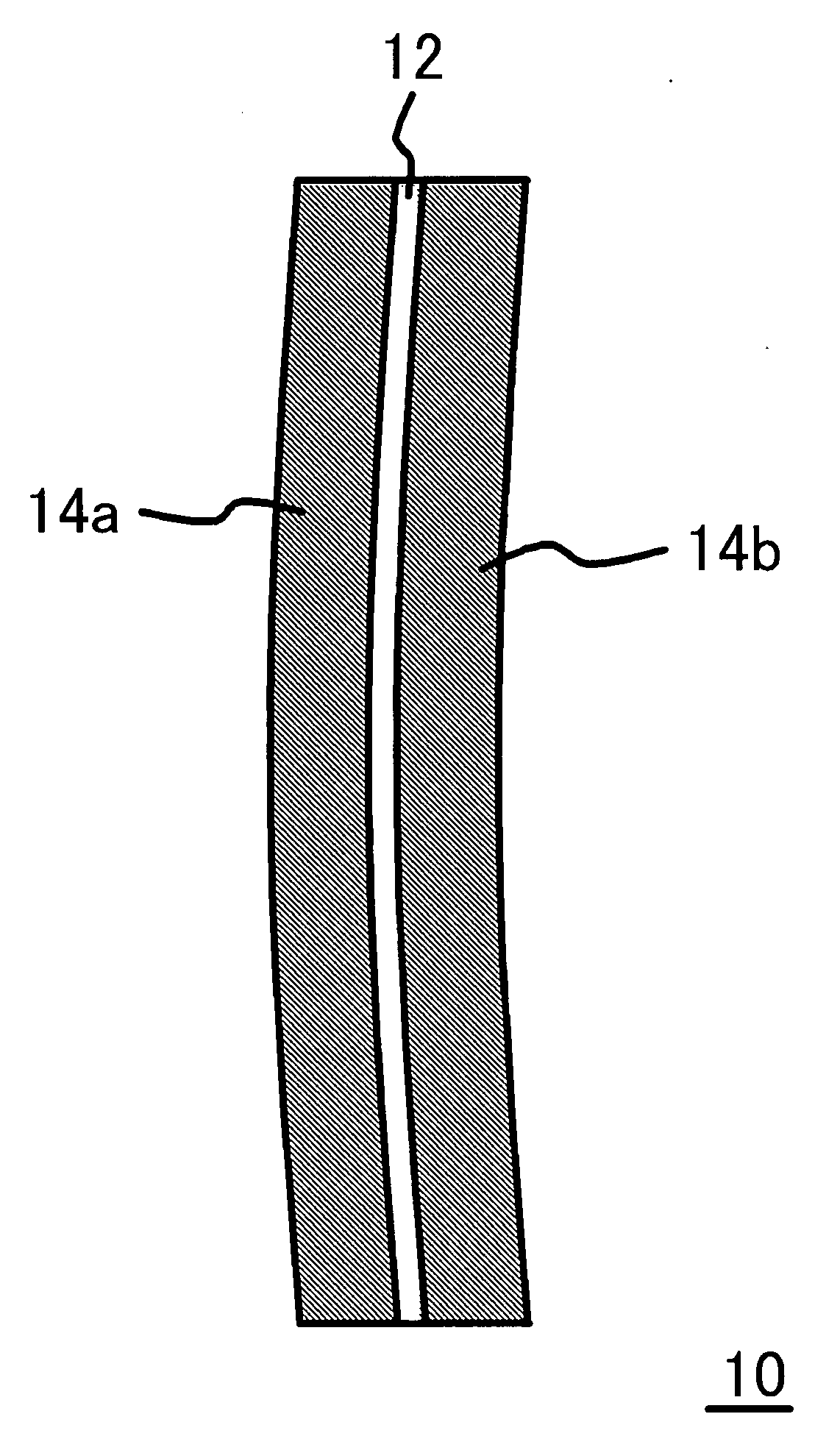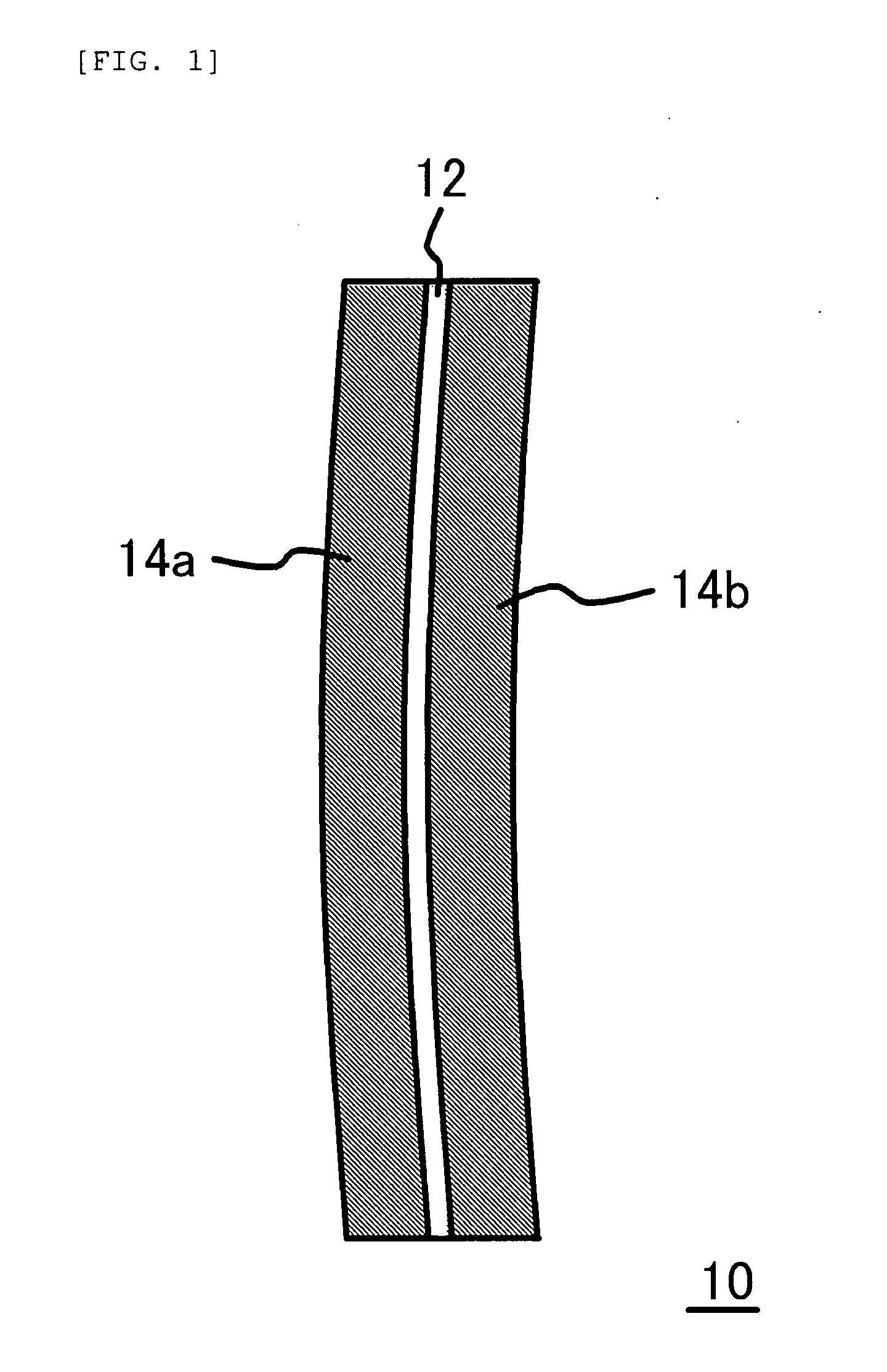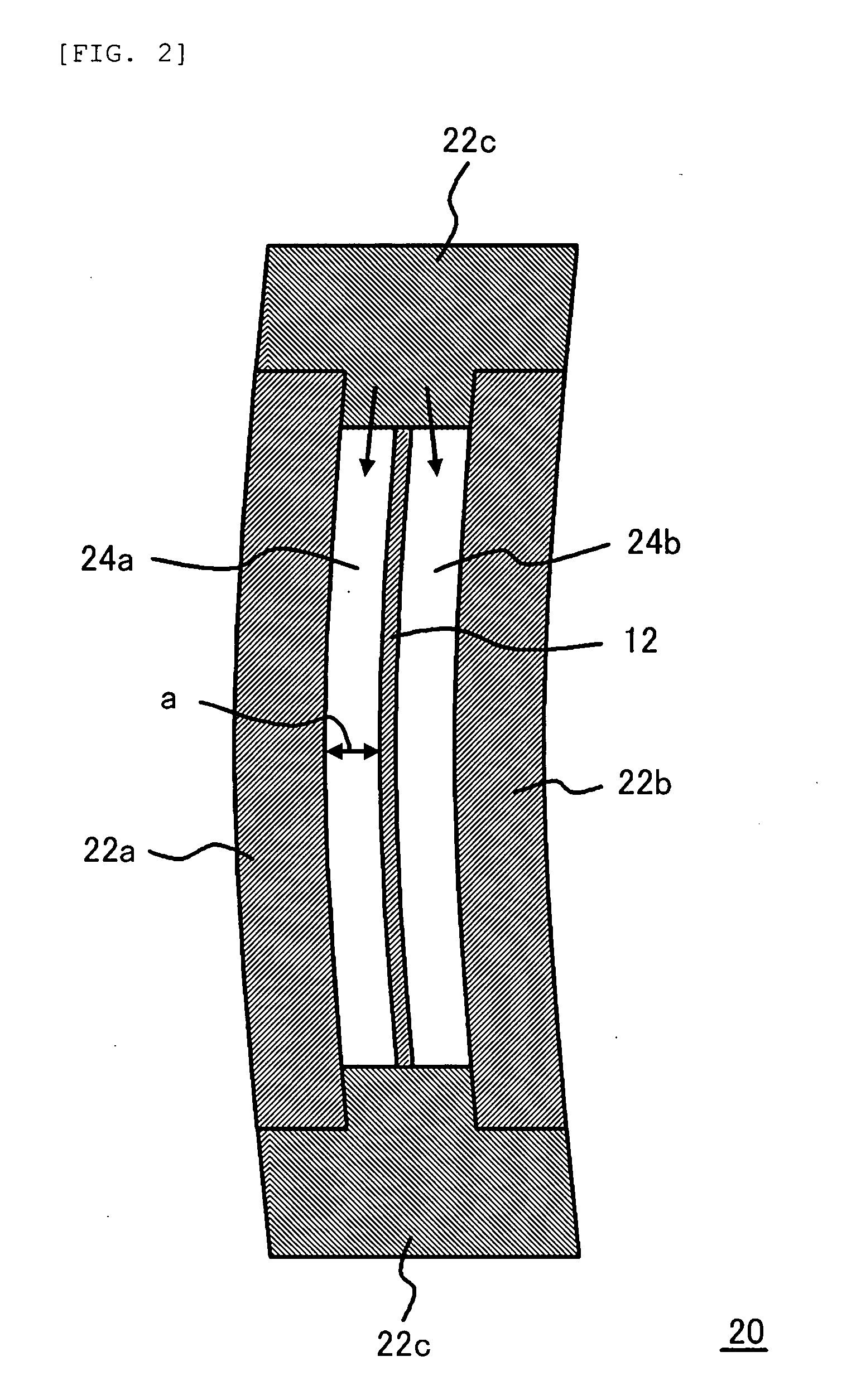Plastic polarized lens and method of producing the same
a polarized lens and plastic technology, applied in the field of polarized lenses and a production method, can solve the problems of thin thickness of the lens, polarized film is liable to be peeled off from the lens material, and gives an uncomfortable feeling to the wearer of the eyeglasses, and achieves excellent processability
- Summary
- Abstract
- Description
- Claims
- Application Information
AI Technical Summary
Benefits of technology
Problems solved by technology
Method used
Image
Examples
example 1
[0157]An impregnating solution was prepared by dissolving 10 g of 3-methacryloxypropyl trimethoxysilane (produced by Shin-Etsu Chemical Co., Ltd., product name: KBM503) as a silane coupling agent in 10 L of methanol just before use, into which 2.0 g of water was added with stirring. A polarized film containing polyethylene terephthalate with protection films on both sides (produced by Mitsui Chemicals, Inc., registered trade mark “POLASOLA”, thickness of 130 μm) was subjected to form a curvature of 2R with a thermal press method. The polarized film was cut to meet the size of the mold, the protection films on both sides were peeled off, the cut specimen was dipped vertically in the above mentioned impregnating solution, quickly taken out and held vertically for 1 minute to drip out the liquid. Then, the specimen was dried in a drying oven with air blower at 50° C. for 10 minutes to prepare a polarized film. This film was inserted and set in a mold (glass mold set) as shown in FIG. 2...
example 2
[0160]An impregnating solution was prepared by dissolving 10 g of 3-methacryloxypropyltrimethoxysilane (produced by Shin-Etsu Chemicals Co., Ltd., product name: KBM503) as a silane coupling agent in 10 L of methanol just before use, into which 2.0 g of water was added with stirring. A polarized film containing polyethylene terephthalate with protection films on both sides (produced by Mitsui Chemicals, Inc., registered trade mark “POLASOLA”, thickness of 130 μm) was subjected to form a curvature of 2R with a thermal press method. The polarized film was cut to meet the size of the mold, the protection films on both sides were peeled off, the cut specimen was dipped vertically in the above mentioned impregnating solution, quickly taken out and held vertically for 1 minute to drip out the liquid. Then, the specimen was dried in a drying oven with air blower at 50° C. for 10 minutes to prepare a polarized film. This film was inserted and set in a mold (glass mold set) as shown in FIG. 2...
example 3
[0163]A polarized film containing polyethylene terephthalate with protection film on one side (produced by Mitsui Chemicals, Inc., registered trade mark “POLASOLA”, thickness of 130 μm) was formed into a curvature of 2R with a thermal press method. After the polarized film was cut to meet the size of the mold, the protection film was peeled off, and the film was dipped in an aqueous solution of 20 wt % sodium hydroxide heated at 40° C. After 30 minutes, the film was taken out and washed with water, and subsequently washed with methanol and air-dried to obtain a polarized film. This film was inserted and set in a mold for polarized lens molding as shown in FIG. 2, and the same process was conducted as in Example 1 to obtain a polarized lens.
[0164]The results of property test of the obtained polarized lens were shown in Table 1.
PUM
| Property | Measurement | Unit |
|---|---|---|
| refractive index | aaaaa | aaaaa |
| refractive index | aaaaa | aaaaa |
| viscosity | aaaaa | aaaaa |
Abstract
Description
Claims
Application Information
 Login to view more
Login to view more - R&D Engineer
- R&D Manager
- IP Professional
- Industry Leading Data Capabilities
- Powerful AI technology
- Patent DNA Extraction
Browse by: Latest US Patents, China's latest patents, Technical Efficacy Thesaurus, Application Domain, Technology Topic.
© 2024 PatSnap. All rights reserved.Legal|Privacy policy|Modern Slavery Act Transparency Statement|Sitemap



